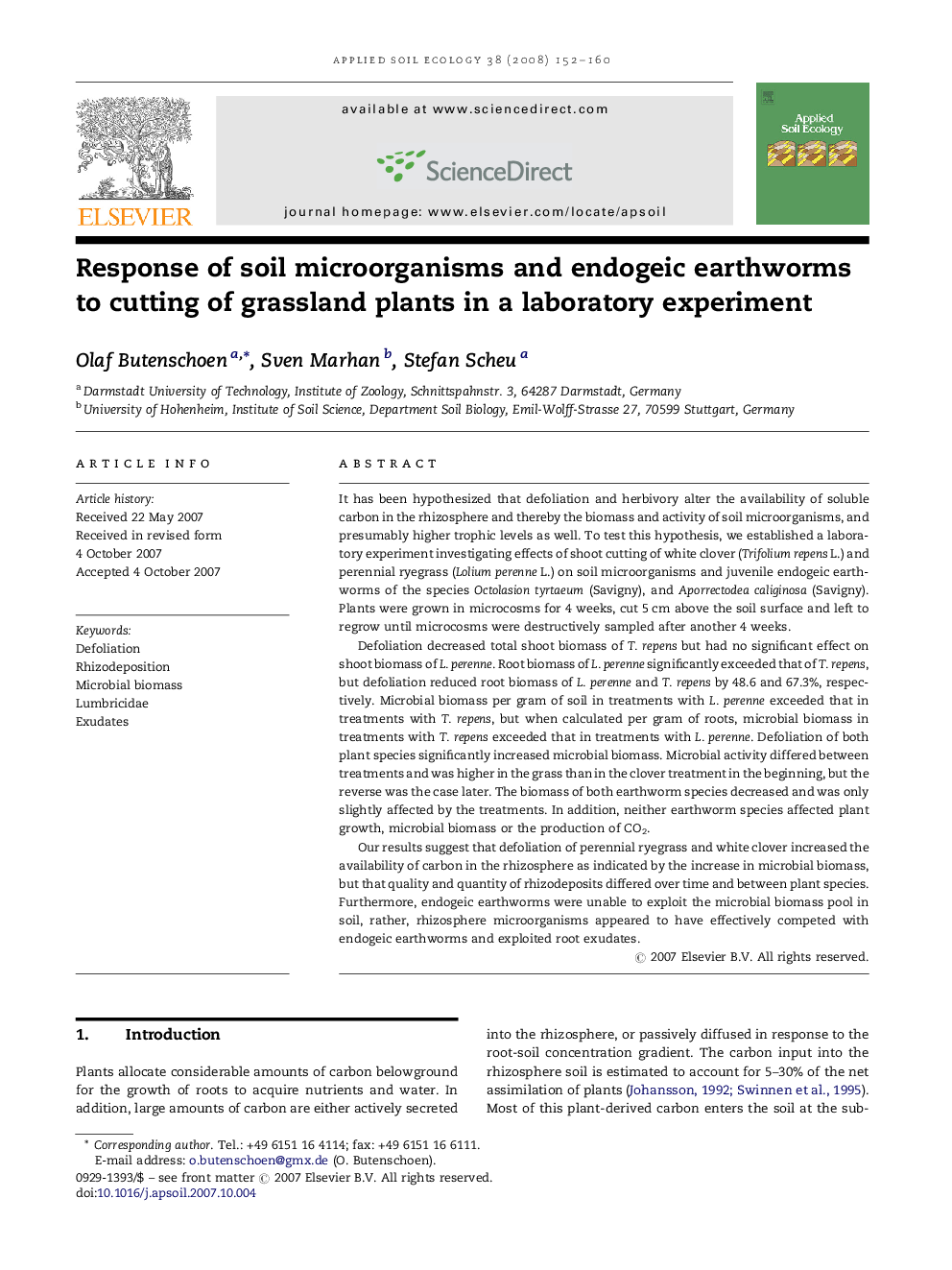| کد مقاله | کد نشریه | سال انتشار | مقاله انگلیسی | نسخه تمام متن |
|---|---|---|---|---|
| 4383266 | 1304257 | 2008 | 9 صفحه PDF | دانلود رایگان |

It has been hypothesized that defoliation and herbivory alter the availability of soluble carbon in the rhizosphere and thereby the biomass and activity of soil microorganisms, and presumably higher trophic levels as well. To test this hypothesis, we established a laboratory experiment investigating effects of shoot cutting of white clover (Trifolium repens L.) and perennial ryegrass (Lolium perenne L.) on soil microorganisms and juvenile endogeic earthworms of the species Octolasion tyrtaeum (Savigny), and Aporrectodea caliginosa (Savigny). Plants were grown in microcosms for 4 weeks, cut 5 cm above the soil surface and left to regrow until microcosms were destructively sampled after another 4 weeks.Defoliation decreased total shoot biomass of T. repens but had no significant effect on shoot biomass of L. perenne. Root biomass of L. perenne significantly exceeded that of T. repens, but defoliation reduced root biomass of L. perenne and T. repens by 48.6 and 67.3%, respectively. Microbial biomass per gram of soil in treatments with L. perenne exceeded that in treatments with T. repens, but when calculated per gram of roots, microbial biomass in treatments with T. repens exceeded that in treatments with L. perenne. Defoliation of both plant species significantly increased microbial biomass. Microbial activity differed between treatments and was higher in the grass than in the clover treatment in the beginning, but the reverse was the case later. The biomass of both earthworm species decreased and was only slightly affected by the treatments. In addition, neither earthworm species affected plant growth, microbial biomass or the production of CO2.Our results suggest that defoliation of perennial ryegrass and white clover increased the availability of carbon in the rhizosphere as indicated by the increase in microbial biomass, but that quality and quantity of rhizodeposits differed over time and between plant species. Furthermore, endogeic earthworms were unable to exploit the microbial biomass pool in soil, rather, rhizosphere microorganisms appeared to have effectively competed with endogeic earthworms and exploited root exudates.
Journal: Applied Soil Ecology - Volume 38, Issue 2, February 2008, Pages 152–160